Coins Collection Part 5 of the series on Viennese museums specializing in a particular subject is dedicated to the Coin Collection of the Kunsthistorisches Museum Wien (KHM Wien).
Münzkabinett
Der 5. Teil der Serie über Wiener Museen, die sich auf ein bestimmtes Themengebiet spezialisieren, ist dem Münzkabinett des Kunsthistorischen Museums Wien (KHM Wien) gewidmet.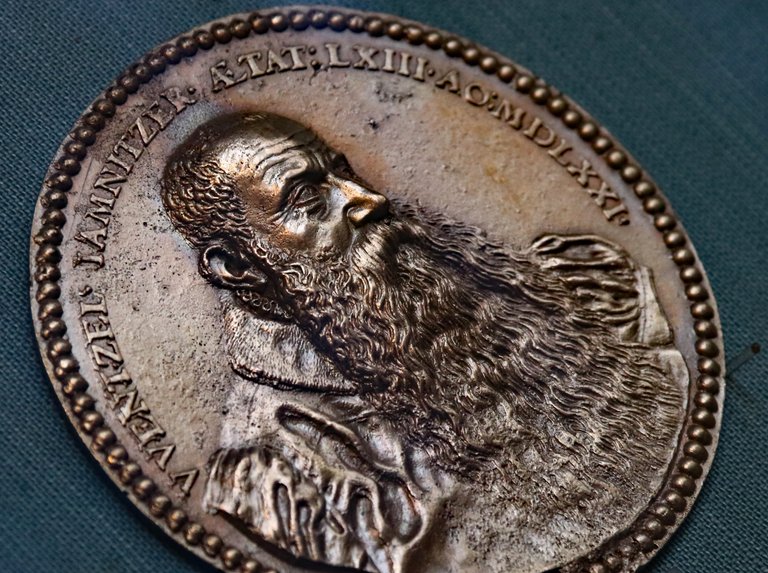
Coin collections are among the oldest museum institutions worldwide. The basis of the holdings of the Vienna Coin Collection goes back to the Imperial Habsburg coin collection. According to the museum's website, the Vienna Coin Collection is one of the five largest and most important coin collections in the world, with some 600,000 objects dating back three thousand years.
Münzsammlungen zählen weltweit zu den ältesten musealen Einrichtungen. Der Grundstock des Bestandes des Wiener Münzkabinetts geht auf die kaiserlich-habsburgische Münzkollektion zurück. Laut Webseite des Museums zählt das Wiener Münzkabinett mit rund 600.000 Objekten aus dreitausend Jahren zu den fünf größten und bedeutendsten Münzsammlungen der Welt.

In three show rooms, the history of numismatics is vividly presented. The exhibition in Room I deals with the history of medals, from their beginnings in Italy around 1400 to the 20th century. The development of coin and paper money is documented in the second hall. Here you can also learn about the technique of coin production. Room III is reserved for special exhibitions.
In drei Schauräumen wird die Geschichte der Numismatik anschaulich dargestellt. Die Ausstellung in Saal I ist dem Medaillenwesen, von seinem Beginn um 1400 in Italien bis zum 20 Jahrhundert, gewidmet. Die Entwicklung des Münz- und Papiergeldes wird im zweiten Saal dokumentiert. Auch erfährt man hier einiges über die Technik der Münzherstellung. Saal III ist Sonderausstellungen vorbehalten.
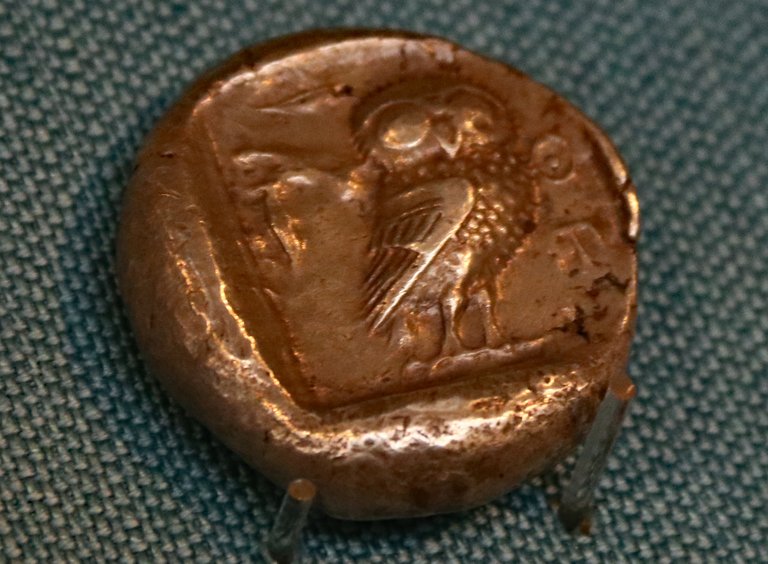

The first coins that were used as means of payment date back to the 7th century BC and were produced in Lydia (today's Turkey).The coins were made of a naturally occurring gold-silver alloy (electron) and were precisely adjusted in weight. During the reign of King Croesus, who went down in history for his legendary wealth, coins were minted from pure gold or silver.
Die ersten Münzen, die als Zahlungsmittel dienten, stammen aus dem 7. Jahrhundert und wurden in Lydien (heutige Türkei) hergestellt. Es handelte sich dabei um im Gewicht genau justierte Münzen aus Elektron, einer natürlich vorkommenden Gold-Silber-Legierung. Unter König Krösus, der aufgrund seines sagenhaften Reichtums in die Geschichte einging, wurden Münzen aus reinem Gold oder Silber geprägt.
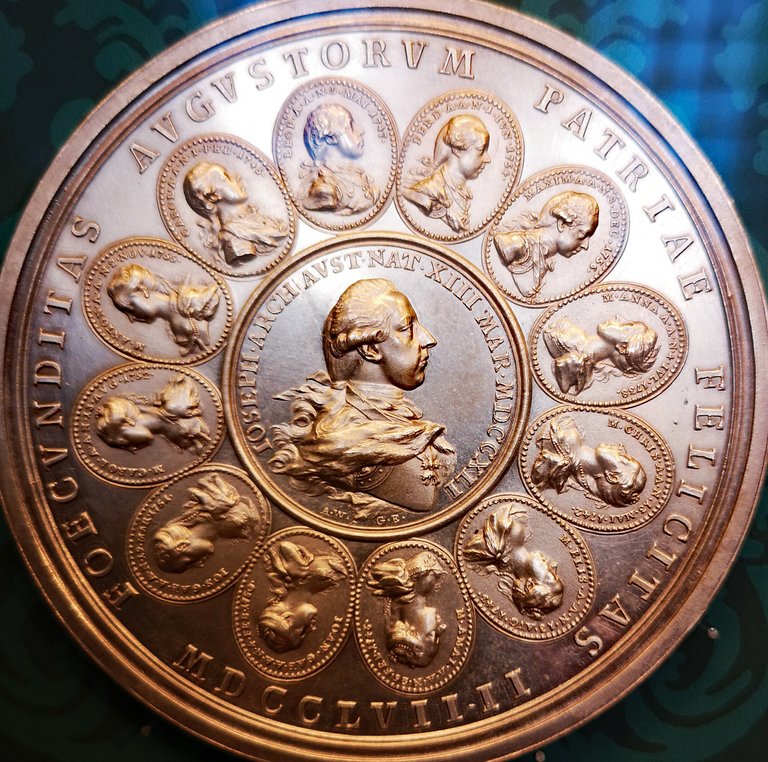
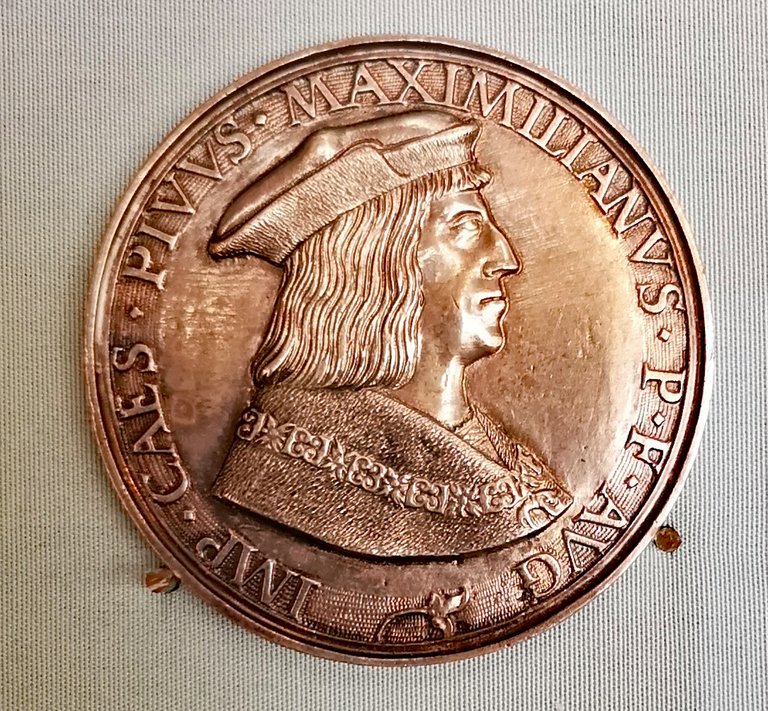
It has always been the privilege of rulers to mint coins. On the one hand, it was a demonstration of power and wealth, on the other hand, coins were also always a form of political propaganda.
Es war seit jeher das Privileg der Herrscher, Münzen zu prägen. Einerseits wurde dadurch Macht und Reichtum demonstriert, andererseits waren Münzen immer auch eine Form der politischen Propaganda.
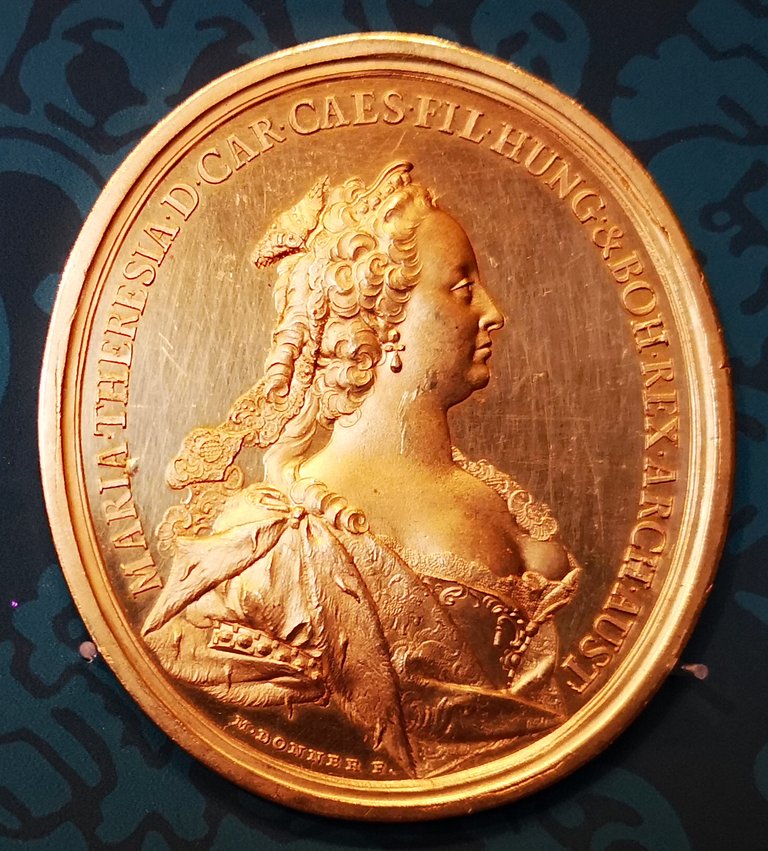
Medals were minted to give them as an honorary award or to honor a particular event. Unlike coins, medals are no legal tender.
Medaillen wurden geprägt, um sie als Ehrenauszeichnung zu vergeben oder um damit ein bestimmtes Ereignis zu würdigen. Medaillen haben im Gegensatz zu Münzen keine gesetzliche Zahlungskraft.

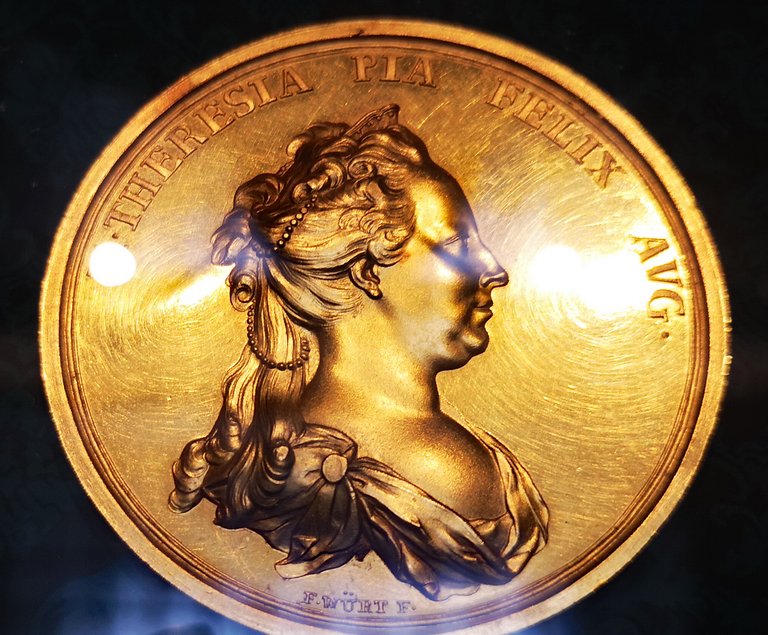

The portrait of Empress Maria Theresa (1717-1780) was minted millions of times on medals. Occasions were either private (births, weddings, coronations, deaths) or political events. Through the spread of medals it was also possible for the common people to participate indirectly in courtly events.
Das Porträt von Kaiserin Maria Theresia (1717-1780) wurde millionenfach auf Medaillen geprägt. Anlässe waren entweder privater Natur (Geburten, Hochzeiten, Krönungen, Todesfälle) oder politische Ereignisse. Durch die Verbreitung der Medaillen war es auch dem gemeinen Volk möglich, indirekt am höfischen Geschehen teilzunehmen.
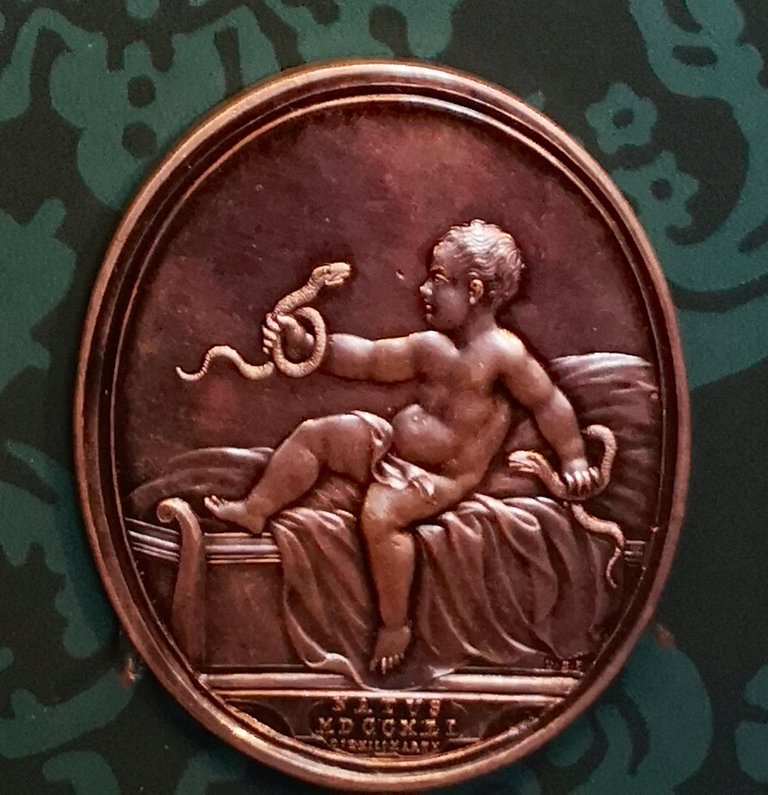
Popular motifs with domestic and foreign medal manufacturers were the births of children from the House of Habsburg-Lorraine. Thus Joseph, the long-awaited first male offspring, was staged as heir to the throne even as a child. On this medal he is given supernatural powers, like Hercules, the hero of Greek mythology.
Beliebte Motive bei in- und ausländischen Medailleuren waren die Geburten der Kinder aus dem Hause Habsburg-Lothringen. So wurde Joseph, der lang ersehnte, erste männliche Nachkomme bereits im Kindesalter als Thronfolger inszeniert. Auf dieser Münze wurde er, dem griechischen Helden Herkules gleich, mit übernatürlichen Kräften ausgestattet.
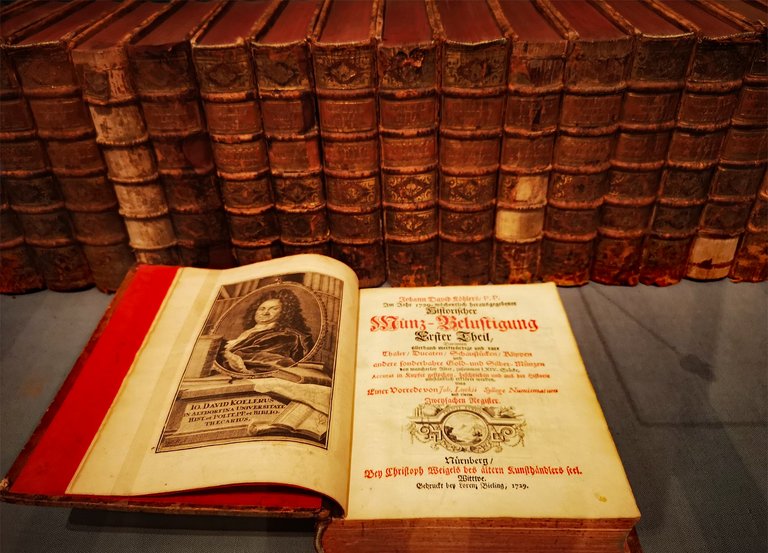
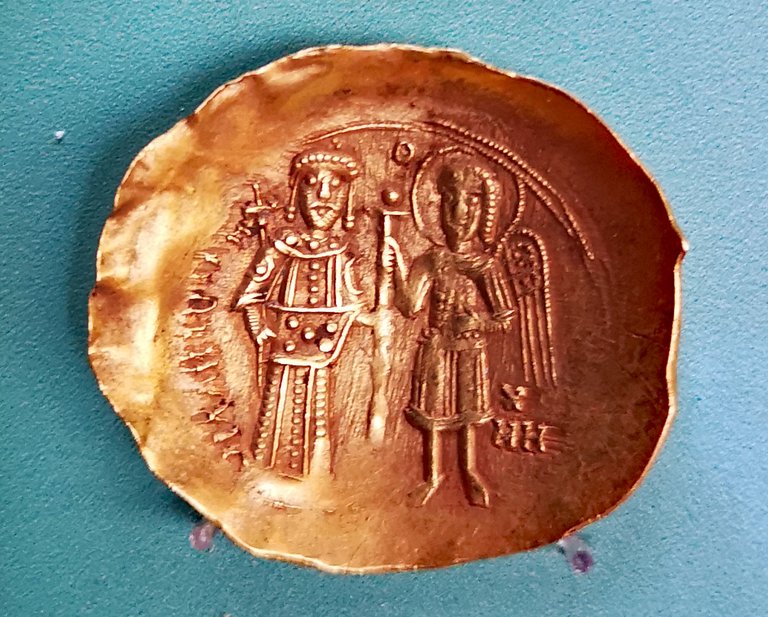
There were also so-called "mocking medals", which commented satirically on the political events of the day. Often members of the ruling family were caricatured on the coins and thus exposed to ridicule.
Es waren auch sogenannte "Spottmedaillen" im Umlauf, die satirisch das politische Tagesgeschehen kommentierten. Nicht selten wurden auf den Münzen Mitglieder der Herrscherfamilie karikiert und dadurch der Lächerlichkeit preisgegeben.
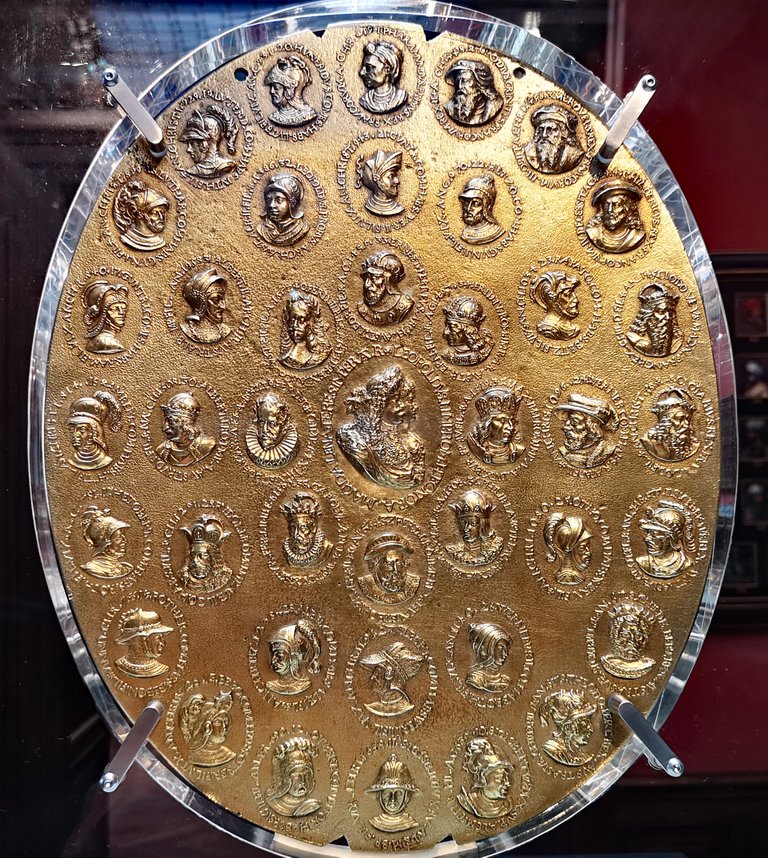
The Alchemical Medallion is the most famous object of the Coin Collection. According to the Latin inscription on the reverse of the coin, its name derives from the fact that the coin, which initially looked silvery, was dipped in a liquid in the presence of Emperor Leopold I and, in the process, turned into gold due to a "true and perfect metallic transformation". The family tree of the emperor is shown on the picture page.
Das Alchemistische Medaillon ist das bekannteste Objekt des Münzkabinetts. Laut der lateinischen Inschrift auf der Rückseite der Münze leitet sich die Bezeichnung aus dem Umstand ab, dass die zunächst silbrig aussehende Münze im Beisein Kaiser Leopolds I. in eine Flüssigkeit getaucht wurde und dabei aufgrund einer "wahren und vollkommenen metallischen Umwandlung" zu Gold wurde. Auf der Bildseite ist der Stammbaum des Kaisers dargestellt.
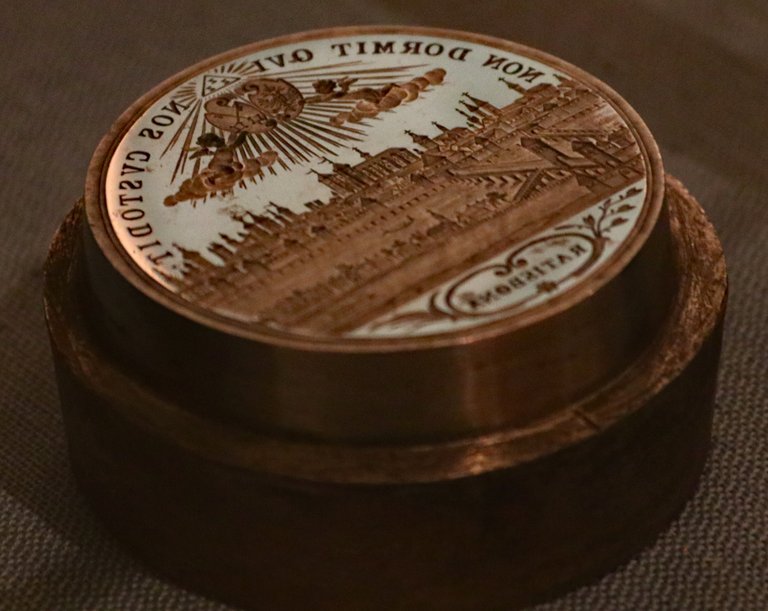
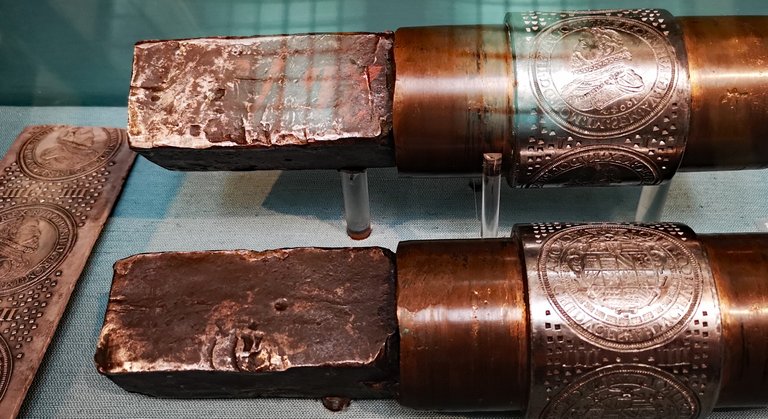
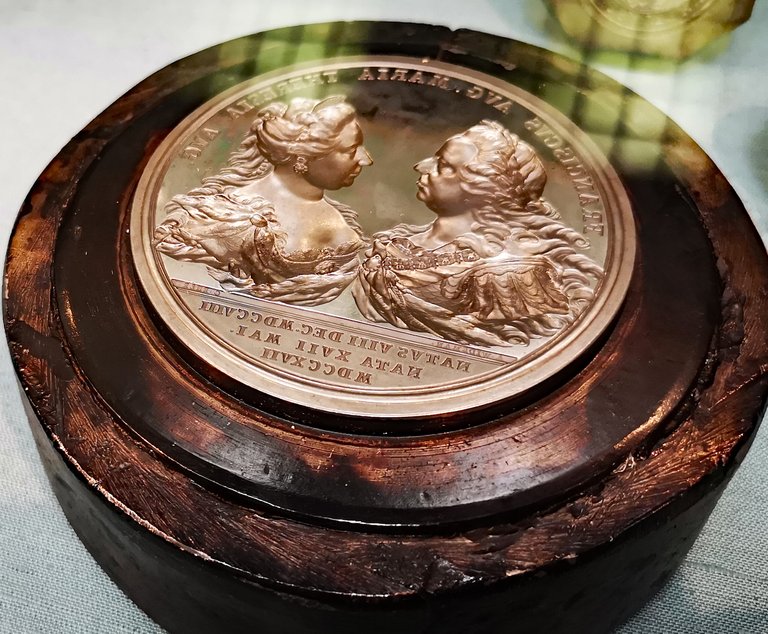
In addition to the approximately 2,000 exhibited objects, coin minting techniques such as hammer and anvil minting, roller minting or spindle press minting are briefly introduced and illustrative material is presented.
Neben den rund 2.000 ausgestellten Objekten werden auch Techniken der Münzprägung wie das Verfahren der Hammer- und Ambossprägung, die Walzenprägung oder die Spindelpresse-Prägung kurz vorgestellt und Anschauungsmaterial präsentiert.
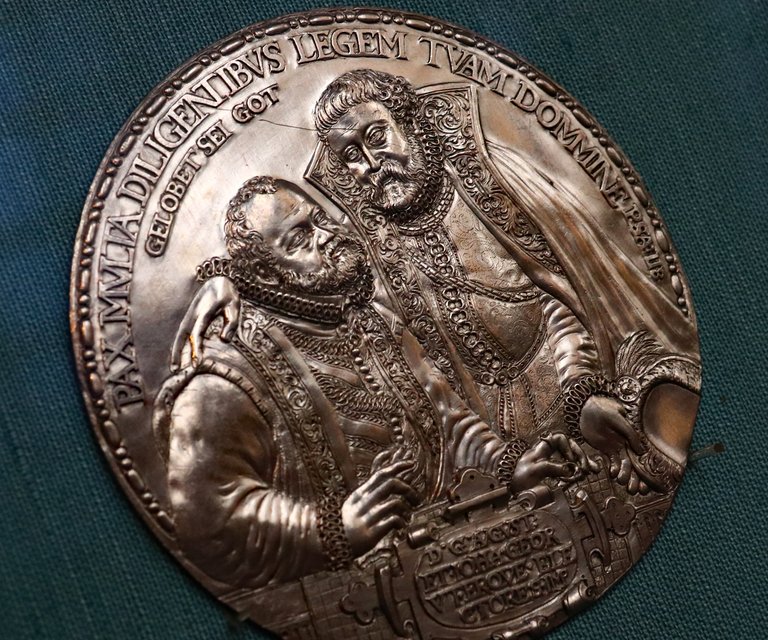
Special Museums in Vienna / Spezielle Museen in Wien
Part 1 / Teil 1
Part 2 / Teil 2
Part 3 / Teil 3
Part 4 / Teil 4
Dear Anna,
Finally I have time for a thoughtful response to this beautiful blog. As always, your pictures are magnificent. This time you managed to capture the texture of the coins. The shadows and sheen give a sense of actually being in the room with the artifacts.
The Maria Theresa Medal of Merit looks magnificent, as does the medal showing Joseph with his supernatural powers. It's hard, though, to select one coin over the other. They are all displayed so well.
The early coins, especially the Labyrinth of Knossos, are perhaps most remarkable for their historical significance. So well preserved. One can try to imagine the circumstance in which the coin was exchanged for a commodity that may no longer exist.
Thank you for this trip through history. My husband and son used to collect coins for the numismatic value. But they were always aware of the charm a coin carried, almost a missive from the past.
I hope you are having a pleasant summer. We live in special circumstances now. Happily, outside is one of the places where we may enjoy the day.
From New York, where summer has brought us near 100 degree heat,
Affectionately,
Your friend,
AG
Dear AG,
Thank you very much for your thoughts about my blog.
With its creaking floors and old wooden showcases, the coin cabinet has a charm of its own. You think you can feel the breath of history. The coins and medals are all beautiful to look at. To hold once such a testimony from the past in your hands must be very special. It's strange, that the Numismatic Collection is rarely visited. Maybe it's because of the unfavorable location inside the museum. But probably only true coin lovers will find their way here.
Especially in uncertain times, gold and silver coins are coming into focus as crisis currency. The Münze Österreich (Austrian Mint) reports record sales. I once read that the US Air Force gives its pilots gold coins to have exchange values in case of a crash on foreign territory. Gold is accepted everywhere and always.
I'm trying to make the best of the present circumstances. Unfortunately, the Corona-related restrictions are slowly increasing again. Let us hope for the best in the future.
Affectionately,
Anna
Dear Vieanna,
I think it is not extreme to consider owning gold, coins or otherwise, in these times. I wish I could afford to stash some away, for security.
Record sales. I'll have to tell my son who does not trust fiat, or the economic policies of world leaders. He'll be fascinated (and vindicated) by the report from the Münze Österreich.
I'm sorry your freedom is once again more limited, and that the virus threatens. Here in New York we have had many mandatory controls in effect for months, and I am grateful for them. After what we went through in March and April, it feels good to have a firm, intelligent governor at the helm.
Please stay well. I look forward to your reports, not only about museums but also about circumstances in Austria.
Affectionately,
AG
Dear AG,
I also think that it would not be wrong to invest part of your assets in precious metals. According to Münze Österreich, demand for them has increased strongly since the beginning of the Corona crisis. They even have to introduce a second work shift to cover the demand for silver coins. In Austria the purchase of gold is VAT-free, Silver on the other hand is subject to 20 percent value-added tax. An identification is mandatory for purchases of 10,000 euros or more.
It's good to hear that NY now has also stricter regulations after the virus was not taken seriously in the beginning. In Austria, the government is working out action plans in case of a second epidemic. I hope that they never have to be implemented.
I wish you well, stay safe and healthy.
Affectionately,
Anna
Dear Anna,
I don't think there will be a 'second' epidemic in Austria. The citizens in your country seem to be civic minded, in that they cooperate with restrictions. The virus can be controlled by people. In my country there is a rather large irrational fringe that denies the reality of the virus and even when the virus is acknowledged, insist on "freedom": the freedom to spread the virus.
Well, that's as political as I will ever get... I won't do it again :)
I believe in buying metals, but my husband and I live on pensions and will probably never work for a wage again (I hope not!). Our assets are pretty fixed at this point, so let's hope things don't get too chaotic.
Please stay well.
Affectionately,
AG
Dear AG,
I follow what goes on in your country through different media. Since I also don't like to make public statements about politics, only this: the performance of your president makes me partly speechless, not only concerning the current crisis management.
Taking responsibility for yourself and others is the order of the day. I hope that we will all overcome the crisis well. Please take care of yourself and stay well.
Affectionately,
Anna
🌞🌹 🌻🌻🌼 🌞
Münzkabinett! Was ein treffender Name! Phantastisch was Menschen schon vor unserer Zeit herstellen konnten. Das ist für mich wahre Kunst. Auch wenn die Macher bestimmt nicht viel dafür bekommen haben.
Liebe Grüße Michael
!invest_vote
!jeenger
Die Münzgraveure mussten neben dem handwerklichen Rüstzeug bestimmt auch große künstlerische Fähigkeiten mitbringen. Ich stelle es mir sehr schwierig vor, beispielsweise ein Porträt detailliert und realitätsgetreu auf einer Medaille oder Münze darzustellen.
Noch einen schönen Abend und liebe Grüße aus Wien.
Wieder mal super aufbereitet! 👍
Vielen Dank, das freut mich, wenn sich die Mühe gelohnt hat :-)
Das denke ich jedesmal: Du musst ja Stunden beschäftigt sein .... 🙂
Ja, das bin ich. Aber mir macht das Recherchieren, Fotografieren und Schreiben viel Spass :-)
Enjoyed this article very much, beautiful works of Numismatic art, and especially regarding economic history. Thank you for sharing @vienna
Re hived!
I'm glad you liked my post. I tried to bring in some historical background as well.
Such a lovely and detailed post here with excellent photography.
Congratulations!
I'm very glad about your appreciation of my article, thank you very much!
Only a pleasure my friend.
Take care!
Absolutely fantastic! Many thanks1
Thanks for stopping by and leaving a comment!
Amazing post! So interesting... 😊
Thank you! :-)
Du wurdest als Member von @investinthefutur gevotet!
Danke.
Du hast ein Upvote von mir bekommen, diese soll die Deutsche Community unterstützen. Wenn du mich unterstützten möchtest, dann sende mir eine Delegation. Egal wie klein die Unterstützung ist, Du hilfst damit der Community. DANKE!
@mima2606 denkt du hast ein Vote durch @investinthefutur verdient!
@mima2606 thinks you have earned a vote of @investinthefutur !